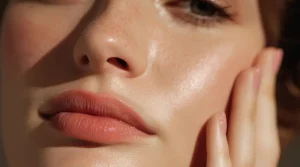As time goes by, our bodies undergo transformations that can leave us looking in the mirror and pondering where the years have gone. Our once-plump faces lose a bit of their cushion, and the youthful spring in our skin seems to slowly fade away. The culprit behind this transformation? A decrease in collagen production, that magical protein responsible for keeping our skin looking fresh and vibrant. This natural decline in collagen often leads individuals to explore cosmetic procedures as a way to combat the visible signs of aging.
One intriguing procedure that has been making waves is Sculptra. Imagine Sculptra as a rejuvenating treatment for your skin. It’s an injectable dermal filler designed to tackle fine lines and wrinkles while also restoring volume to specific areas. What sets Sculptra apart from traditional fillers like Juvederm? Sculptra doesn’t just provide a temporary plumping effect; it goes a step further by stimulating your body to naturally produce collagen, allowing for a gradual and natural rejuvenation of your facial skin.
With a multitude of “filler” options available, it can be quite the head-scratcher trying to determine which one is the best fit for you. To make this decision-making process a bit smoother, we’ll delve into the differences between Sculptra and traditional fillers.
Natural Results: The Marvel of Collagen
The key distinction between Sculptra and traditional fillers lies in their impact on collagen production. Unlike Sculptra, traditional fillers such as Juvederm and Restylane don’t give your body a nudge to produce more collagen. These fillers, typically crafted from hyaluronic acid, work by swiftly plumping up areas with wrinkles, delivering instant volume and a smoother appearance.
However, there’s a catch: the effects of most facial fillers usually last only 6 to 12 months, which is preferred by some individuals for various reasons. In contrast, Sculptra can provide longer-lasting results that extend across several years.
What is Sculptra?
Sculptra is concocted from an exceptionally safe biodegradable compound. While it received FDA approval in 2004, it has been a trusted component in various medical procedures for over three decades. Opting for Sculptra treatments at Westport Dermatology and Laser Center usually takes about 45 minutes. Some patients may require multiple injection sessions to achieve their desired results because collagen development is a gradual process. The true, long-lasting magic of Sculptra becomes evident several months after treatment.
But here’s the comforting part: you won’t have to twiddle your thumbs for months on end to witness transformation. You’ll experience immediate improvements, a characteristic also shared with filler injections. After your appointment, you’ll leave with visible changes in the treated areas – no extended waiting period for your new look to emerge.
Comparing Studies: What Research Tells Us
To get a deeper understanding of the real impact of Sculptra versus traditional fillers, let’s take a peek at some research findings. Studies have shown that Sculptra can significantly enhance the appearance of wrinkles. In one study, nearly 100% of participants experienced a reduction in frown lines four weeks after treatment, with over 30% still enjoying those results after six months.
In comparison, traditional fillers like Juvederm and Restylane deliver impressive initial results, with about 80% of users experiencing minimal frown lines within 30 days. However, only 25% maintained this result after four months.
Common Side Effects: What to Expect
The good news is that both Sculptra and traditional fillers are generally well-tolerated. Nevertheless, like any medication, they carry potential side effects. The most common side effect for both is a headache, although it’s slightly more likely with traditional fillers than with Sculptra. You might also experience some redness, bruising, or pain at the injection site, which is entirely normal.
Other side effects are possible but rare, such as a droopy eyelid or difficulty moving your facial muscles. These effects occur in less than 2% of people receiving these treatments for frown lines. Eyelid drooping may be more common when traditional fillers are used for forehead lines, affecting up to 20% of people.
Serious Risks: What to Watch Out For
While rare, it’s important to be aware of potential serious risks associated with Sculptra and traditional fillers. These risks include severe allergic reactions, the exceptionally rare spread of toxin effects, heart concerns for individuals with pre-existing conditions, aggravation of muscle symptoms, and breathing difficulties, especially for those with pre-existing respiratory or swallowing issues. If you ever experience any of these serious side effects, it is advised to seek emergency medical care immediately.
Potential Medication Interactions
Sculptra and traditional fillers could interact with some medications. To be safe, inform your healthcare provider about all the medications and supplements you’re taking. This helps them check for potential interactions.
Embrace Your Youthful Radiance
When deliberating between Sculptra and traditional fillers, the choice boils down to your unique needs and preferences. If you seek natural, long-lasting results that gradually rejuvenate your skin, Sculptra could be your ideal choice. On the other hand, if you prefer swift results with a shorter duration, traditional fillers might be your preferred option.
What truly matters is that you have options, enabling you to select the one that instills confidence and joy in your skin. So why wait? If you want to attain that radiant, wrinkle-free skin you’ve always dreamed of, it’s time to make a crucial decision: Sculptra or traditional fillers? Contact us today or simply complete our online form to book your appointment. Your skin deserves nothing but the best, and we’re committed to providing just that. The choice is yours, and it’s an important one!






